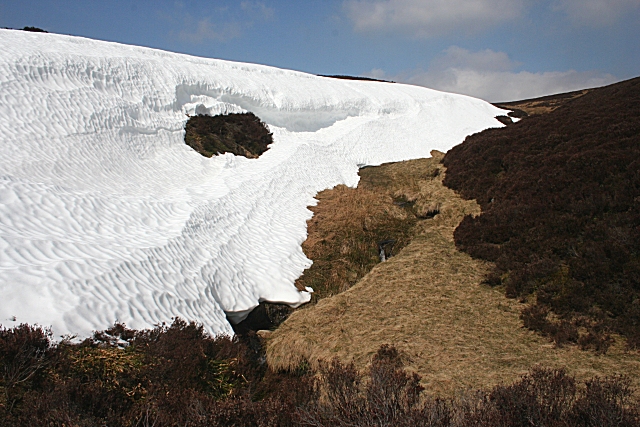By comparison space has few constraints. Gravity tethers us, yet we may jump. We may move in any direction in space, yet time moves irreversibly forward. While we may remember the past, we cannot not travel back in time.
Earth time is perceived as sequences of events.
"Time is what prevents everything from happening at once."
― John Archibald Wheeler
 |
| Snow Bank |
As individual frames, we might detect evidence of a phase change from ice to liquid by the glint of the sun reflected on water drops.
If the frames were sped up so they were experienced in animated succession, and if the temperature was above freezing, we might imagine sublimation (the phase transition from solid to gas) as the snow bank shrunk.
"Time isn't just a label on each instance of the world; it provides a sequence that puts the different instances in order."Many scientists have observed the remarkable phenomena of the irreversibleness of these events. Science conceived of entropy as a framework to understand the tendency of these events to progress in a way that cannot be reversed.
― Sean Carroll
Astronomers, physicists, and cosmologists call this irreversibility The Arrow of Time. The arrow metaphor captures the idea that time flows in one direction. As time flows, empirical evidence indicates that energy dissipates or disintegrates from well-ordered (low entropy) to disorderly (high entropy).
| Hemispherical Sundial |
"The Earth spins on its axis, and it's going to do so 365.25 times every time the Earth moves around the sun."We experience repetitive seasons. Many of earth's processes occur over and over like the water cycle.
― Sean Carroll
On, above, and below the surface of the Earth, water undergoes continuous change. The changes are explained by physical processes (evaporation, condensation, precipitation, infiltration, runoff, and subsurface flow and by phase changes (liquid, ice, and vapor).
"The key to measuring time is synchronized repetition ― a wide variety of processes occur over and over again, and the number of times that one process repeats itself while another process returns to its original state is reliably predictable."Time feels real to us. Our hearts pump rhythmic beats. We need time to frame perception and to order and make sense of the incoming data.
― Sean Carroll
"Time is an illusion."It feels as if time flows. However illusory it is, we sense time as the present constantly updating itself like oncoming river water approaching a bridge. We sense the future as anticipated (and unanticipated) events. The future remains distinct until it becomes the present. We sense the past as fixed and immutable.
― Albert Einstein
Sensing the flow of time, we carry the framework of fixed past, immediate present, and anticipated and unanticipated future along with us like a familiar backpack that structures our thoughts and behavior.
"As if you could kill time without injuring eternity."
― Henry David Thoreau
REFERENCES
- From Eternity to Here. 2010. Sean Carroll.
- Philosophy of Space Time. Wikipedia.


